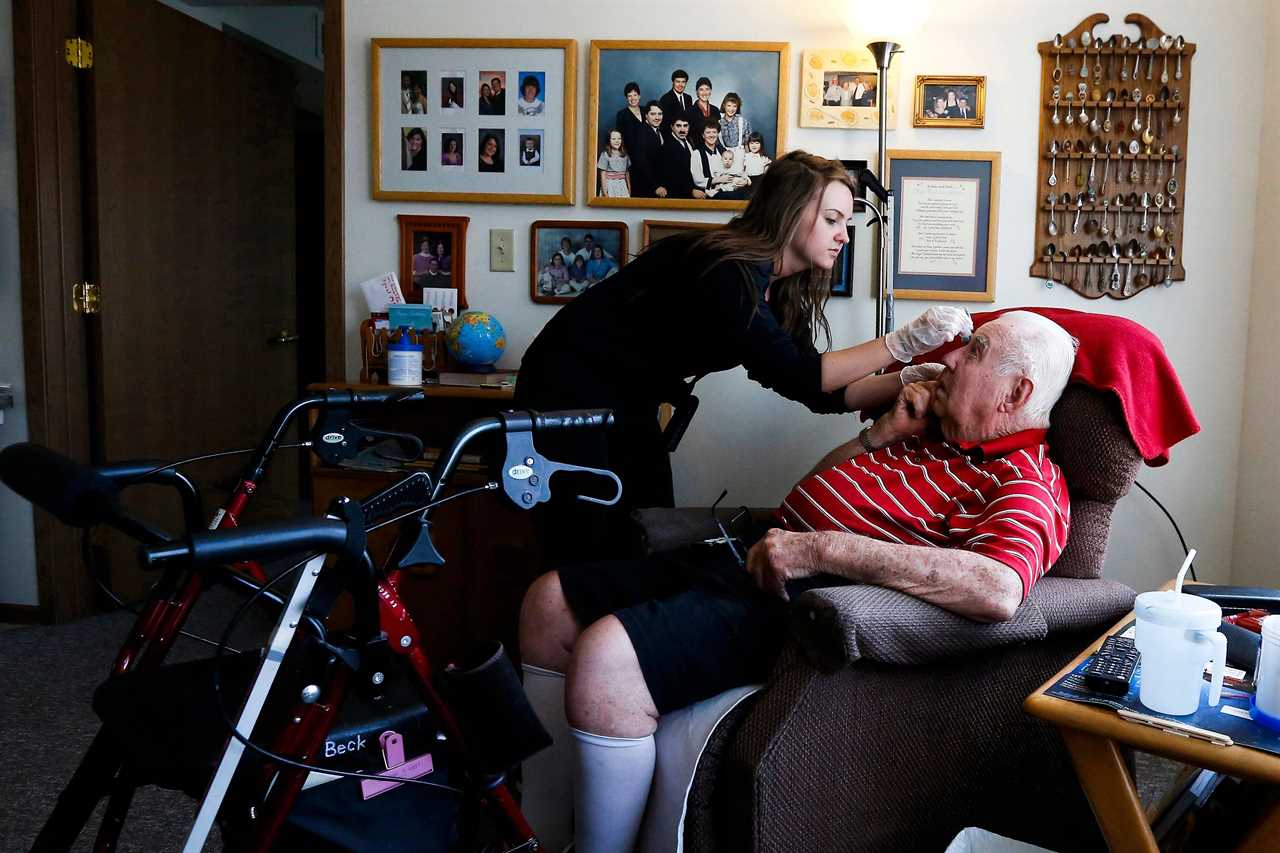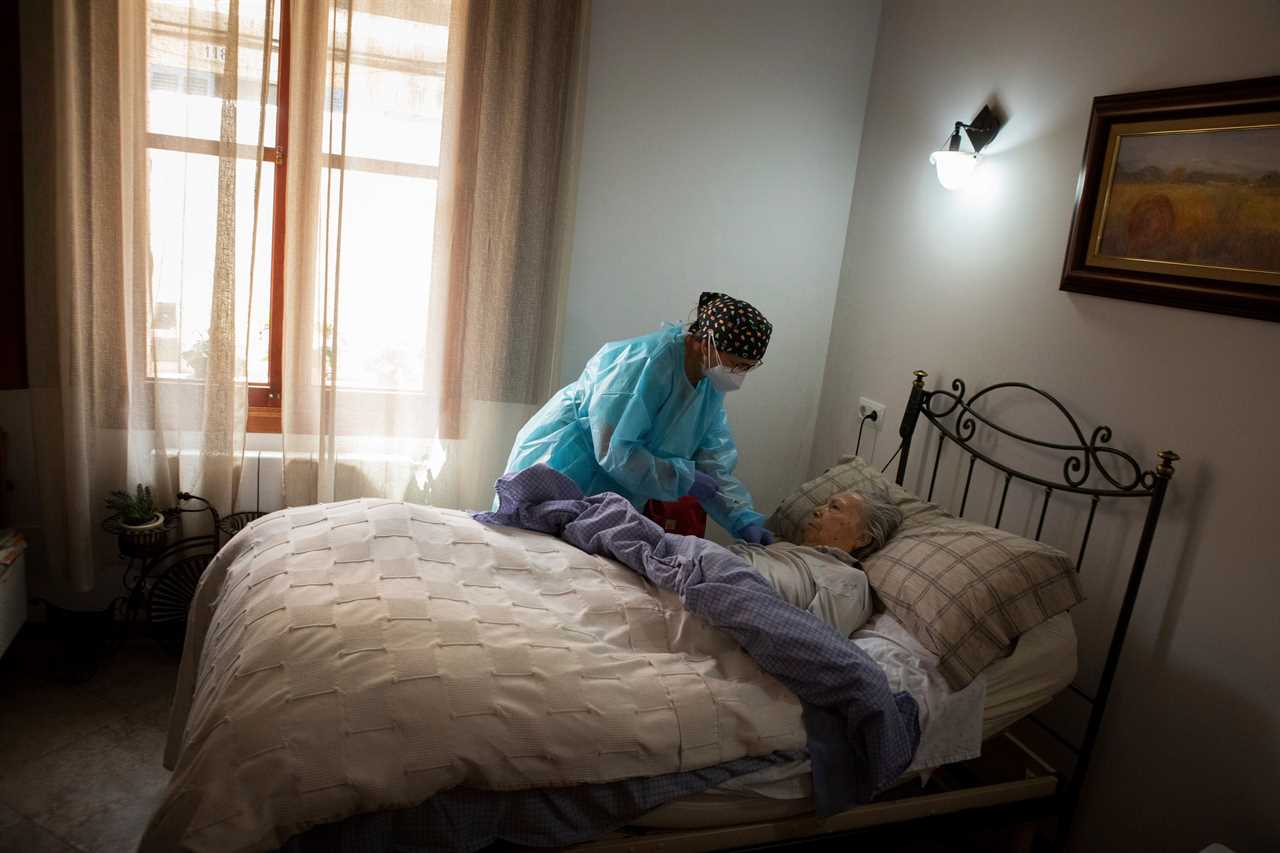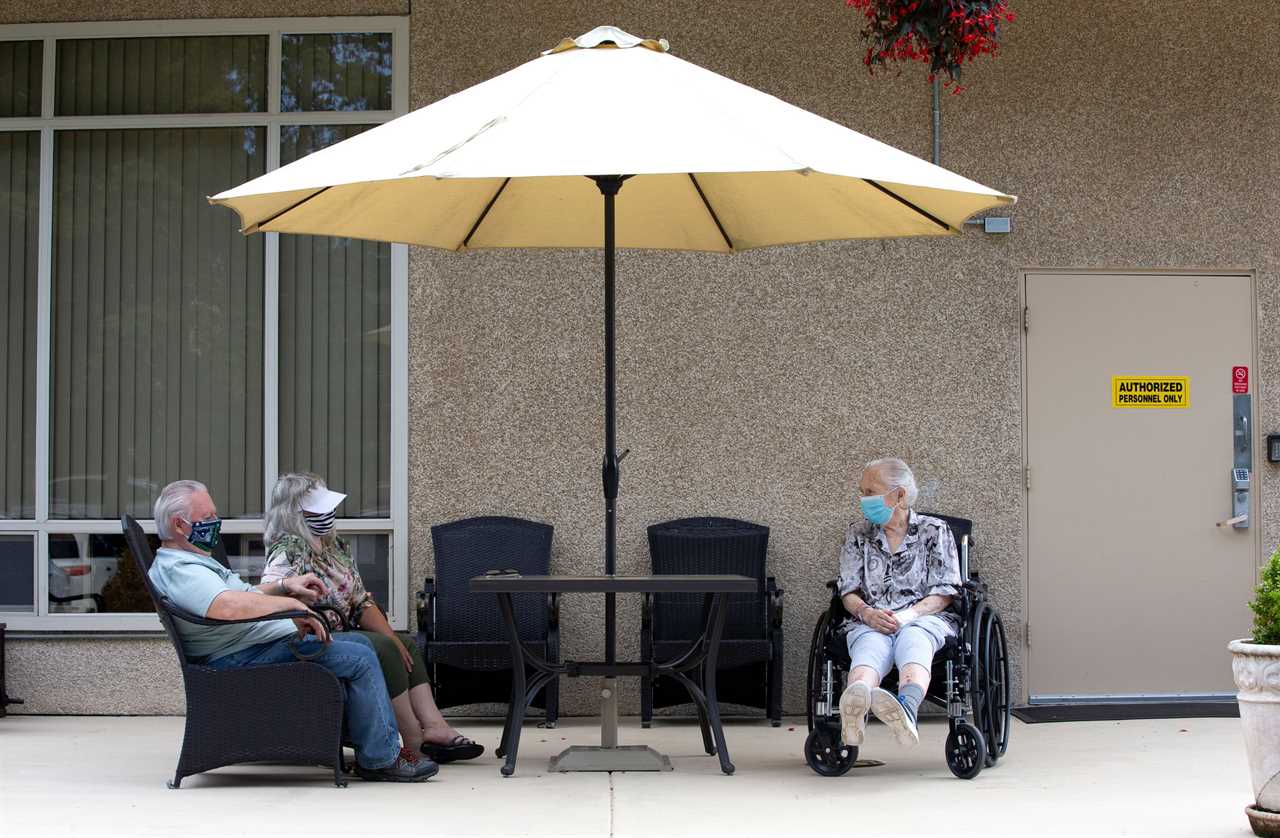
The sweeping social spending package inching its way through Congress contains billions of dollars for something that Americans don’t like to think about, and politicians don’t like to talk about: long-term care.
It’s the missing piece of the American safety net, and one that is particularly acute in an aging society. Long-term care — or what’s now called long-term services and support — is essential for millions of people who are elderly or people with disabilities who cannot do basic things such as feed, clothe or bathe themselves. But delivering such care is enormously costly, and Washington has addressed the issue only haltingly over the years.
It seemed like this time might be different. President Joe Biden made care-giving a key piece of his agenda and he proposed spending a whopping $400 billion in his Build Back Better plan, with a focus on letting people stay at home rather than being forced into a nursing home. Moderate resistance to the legislation’s broader price tag, however, has whittled that figure down to $150 billion in new Medicaid funds.
That’s still a historic sum for home care, assuming the bill is ultimately passed by squabbling lawmakers on Capitol Hill. But it barely scrapes the surface of what’s needed. And with Democrats in danger of losing their majorities next year, it’s clear the best shot at finally tackling one of the biggest holes in American health care is slipping away.
The architects of the plan are projecting optimism, but even they acknowledge it’s only a start.
“The United States is in the midst of a caregiving crisis and we have a once-in-a-generation opportunity to address it,” Sen. Bob Casey, (D-Pa.) who secured the provision in the bill with Rep. Debbie Dingell (D-Mich.), tells POLITICO in a statement. “This is a significant step towards meeting our commitment to seniors, people with disabilities, home care workers and their families.”
And it’s true that the $150 billion will help — particularly the very poor, or the people who become very poor after using up their life savings on caregiving or foregoing paid work to care for a loved one.
Lack of resources has kept more than 800,000 people on state waiting lists to receive Medicaid services and untold numbers not even trying to get on the lists. The funding will also improve the pay and working conditions of the hard-working but underpaid home health work force, which disproportionately comprises women and people of color. Under the Casey-Dingell language, states won’t get the extra Medicaid money if they don’t address both the paid workforce, and to an extent, the needs of unpaid family caregivers.
But even that pile of money is just a patch for an overburdened, underfunded home health plan within Medicaid.
It won’t create a comprehensive or cohesive national system. It won’t give everyone the option to stay home for care instead of spending their final days, months or years in a nursing home. It won’t stop the cycle of impoverishment that often accompanies long-term disability (including for young people with disabilities and their families) or a prolonged and ineluctable end-of-life decline. That financial burden — ranging from lost wages to eating up meager retirement savings — is particularly severe for Black and Latino families, a report from the AARP found this fall.
A recent poll from the Kaiser Family Foundation found that one in five Americans is receiving care from a family member or close friend; a similar proportion is providing unpaid care. And on both ends, many of them report that they need more help from a paid nurse or aide — and money is why they can’t get it.
Money of course is the biggest reason that it’s so hard to find a nationwide solution, and why even Democrats mostly shy away from it. Long term services and supports, including nursing homes, costs well over $400 billion a year, according to a recent report from the Bipartisan Policy Center. And that doesn’t count lost wages or the value of family caregivers’ unpaid labor.
But the same ideological debates that roil other aspects of health care play a role here too. How much is a family’s responsibility and how much is the government’s? How much should the private sector figure out, amid a dysfunctional long-term care insurance market and inadequate benefits and flexibility for employed caregivers? How disabled must someone be to qualify for assistance?
At one end, single payer advocates such as Bernie Sanders have proposed rolling free long-term care into a government-financed health system. At the other, conservatives, including during the GOP’s failed Obamacare repeal efforts, have proposed drastic cutbacks or reworking of Medicaid in ways that could end up cutting non-institutional based services.
“We run the skimpiest long term care system in the world,” says Judith Feder, a health care expert at Georgetown, a former HHS official in the Clinton administration and the staff director of the Pepper Commission which back in 1990 outlined a vision, still unrealized, for a national long-term care system. “The fact is that families do as much as they can do,” she says, but a new social insurance program to close the gap is needed.

Terry Fulmer, president of the John A. Hartford Foundation and a nationally known expert on aging and long-term care, is more optimistic. Washington may not be solving the problem, but she sees rising activity beyond the Beltway to support family caregiving. The tech industry, she says, is eyeing tools and solutions. Employers are offering more support to workers who are also family caregivers. Insurers are embracing new community-based approaches to dementia or palliative care. Even venture capital is getting into the aging game.
Crunchbase identified $2.5 billion in venture-backed investments in eldercare and home-care startups in the last 5 years. What services will cost, who they will serve and how well they serve them remain open questions — as are what can new technology handle and what will remain hands-on. And for the hands-on part, where are they going to get the home-care workforce to do the jobs and how well will they be paid, trained and supported?
The money for home- and community-based care currently included in the reconciliation package has largely flown under the radar during the bitter negotiations over the legislation — and that’s been to its benefit.
It hasn’t gotten caught in the intra-party fights over Democratic health care priorities: Medicaid expansion versus expanded Obamacare subsidies verses adding benefits like hearing and dental care to Medicare. Casey, who is chair of the Senate Aging Committee, and Dingell, who often speaks publicly of how hard it was to take care of her late husband, the former Rep. John Dingell even with their resources and connections, quietly kept pushing the provision ahead while keeping it out of the headlines, one conversation at a time. With the exception of groups like SEIU focusing on the home health workforce, interest groups weren’t all that voluble or visible.
The result is the most significant attempt to address the caregiving crisis since the collapse of the CLASS Act more than a decade ago.
The CLASS Act, a piece of Obamacare that stood for Community Living Assistance Services and Supports, was put on ice within months, and formally repealed in 2013. It wasn’t actuarially sound as drafted. And once the Democrats lost their filibuster proof supermajority after the death of Ted Kennedy — himself the CLASS Act’s biggest champion — they lost any pathway to fixing it, whether or not they had the political will.
Connie Garner, a long-time Kennedy aide who worked on the CLASS Act and is now a private sector attorney who is still involved with disability policy, wants to see a more comprehensive solution — including providing better training and a career ladder for long-term care workers. But she’s still strongly supportive of what the Democrats are doing in the reconciliation bill. “It’s better care and better jobs,” she says. “But as a society, we’re just not good on this issue.”
CLASS was a voluntary program that would have helped reduce long-term care needs but wouldn’t pay for all of them. People could invest in a limited insurance policy that they could eventually use for home care — anything from building a wheelchair ramp in their home to helping pay for an aide. It wasn’t designed to be comprehensive. But it was something, and it was available for anyone who chose to participate. Its almost immediate collapse only underscored how difficult it is to get a grip on the issue. And the Democrats’ rapid surrender showed how tough they think this challenge is to solve.
The Casey-Dingell framework takes a different approach. It puts $150 billion into home- and community-based care for low-income Americans on Medicaid, or those who become low-income after struggling with the costs of such care or quitting a paying job to care for a relative with a condition such as dementia or other ailment that limits function, mobility or cognition. Medicaid has to cover nursing homes; home- and community-based care is an add on. All states have it, in some form or another, but they can and do limit it — hence the 800,000-person waiting list.
The emphasis on improving the workforce is a core part of the Casey-Dingell approach, and it’s something that hasn’t always gotten a lot of attention in the past.
“Those workers are extremely important for keeping people at home,” rather than in a nursing home, says former HHS Secretary Donna Shalala. “And that’s both cheaper and more in line with people’s wishes.”
Across American society the need will only grow. Despite the dip in life expectancy in the last couple of years because of either “deaths of despair” such as overdose and suicide, or the coronavirus, Americans are living longer than a generation ago. But they aren’t always living healthier — what gerontologists call a gap between the “life span” and the “health span.”
It’s estimated that about 70 percent of Americans will need long-term services and supports for three to five years, sometimes longer. An adult day program costs around $20,000 a year (and some closed during Covid, creating a cascade of other problems). Nursing homes cost more than $100,000 a year for a private room; neither Medicare nor most private health plans pay for them except for limited circumstances — although many families don’t realize that until the crisis has already hit. Relatively few Americans have long-term care insurance; years of mumbling, sometimes bipartisan, in Congress about fixing that sector have gone nowhere.
But because people don’t appreciate the lack of coverage, the cost or what family caregiving involves, there’s not more agitation for Congress to do more; there’s no real constituency fighting for change.
And given the cost, it’s no wonder that lawmakers look at the bill, cringe and largely stay silent. Think tanks and universities pump out reports on options and approaches, but by and large, they stagnate. Nursing homes themselves may push against community-based alternatives, which are less expensive and generally preferred by patients and families.

“The nursing home industry is very powerful in state legislatures,” says Nina Kohn, an expert on aging and law at both Yale and Syracuse. “It’s really state sponsored market-failure. You are propping up an industry that people don’t’ want to use.”
Meanwhile milestones come and go. “I remember when we said this would be solved before the Baby Boomers started turning 65,” Feder says. “That was 2011.”
Maybe, as Fulmer notes hopefully, government inaction will be eclipsed by private sector action. But there are skeptics.
“We don’t fix this because we just don’t care about old people,” says Lori Porter, who heads the National Association of Health Care Assistants, which make up much of the long-term care workforce in and out of nursing homes. “Old people don’t matter in this country. And they never have.”
----------------------------------------
By: Joanne Kenen
Title: Opinion | ‘We Don’t Fix This Because We Just Don’t Care About Old People’
Sourced From: www.politico.com/news/agenda/2021/11/11/congress-long-term-care-520649
Published Date: Thu, 11 Nov 2021 04:30:32 EST






